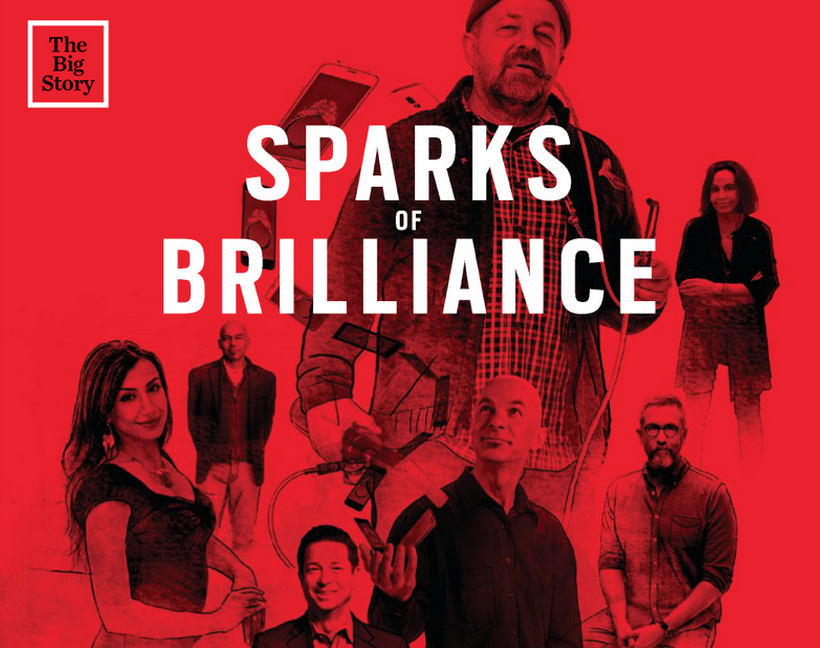
BY TRACE SHELTON
10 big thinkers
forge jewelry’s
future
in the fires
of innovation
Give the people what they want. That’s the message from 10 of the most successfully innovative business owners in the jewelry industry today. More than that, it’s what makes each of them tick. From a father-sons combo that leverages new technology to make Old World designs more affordable, to a retailer who makes worldwide shopping and shipping a cinch, to a tech exec who simply wanted to save women from missing phone calls, each of these leaders started with the desire to make people happy and took it further than most have the courage to.
And yet courage is the one key ingredient that most of them won’t mention. Why? Because fear doesn’t seem to enter into their decision-making in the slightest. Ylang | 23 co-owner Joanne Teichman, for example, admitted that they’ve made plenty of mistakes in trying out new things. “There are a lot of things that have come out, technology-wise, that I have jumped in and been first to market and probably didn’t need to do it. I always wanted to have all the bells and whistles on our website. Was it always the right thing to do? Not necessarily.”
Likewise, some of our innovators poured money and time into initiatives that weren’t guaranteed to succeed. Ritani president Brian Watkins remembers the uncertainty before the company’s clicks-and-bricks website became one of the industry’s biggest success stories. “2011 was a lot of late, late nights trying to lay in code. Having worked on this for about six months, we went down to the JCK Show and prepared for a private meeting with key retailers. I said, ‘In about two hours, we’ll know whether we have something or not.’ It’s a moment I’ll remember forever.”
If there’s one thing you can learn from these 10 leaders, it’s that out-of-the-box thinking alone does not breed innovation. It also takes collaboration, research, time and, most of all, a whole lot of “damn the torpedoes” resolve.
Characteristics that this group has in spades.
Advertisement
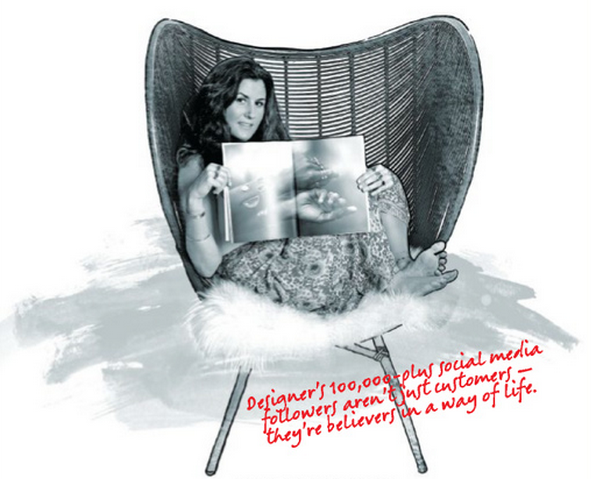
JEWELRY DESIGNER
JACQUIE AICHE
BEVERLY HILLS, CA
138,000 Instagram followers don’t come easy — or, at least, not for most people. But designer Jacquie Aiche’s jewelry, personality, and message resonate so powerfully with her fans that they have to connect with her in some way. Today, they’re all a part of the designer’s growing #JATribe family, and she treats them regularly to compelling photos of jewelry, women, and even motivational quotes. “It’s about passing on inspiration through social media,” Aiche says.
Selling inspiration rather than jewelry? It’s not just lip service for Aiche, who gets fulfillment from seeing other women gain self-confidence through her jewelry. “I recently told one of my competitors, ‘I’m not selling jewelry anymore. We’re selling energy.’ We want women to leave happy and wear their jewelry with pride.”
Women feel different when they wear Aiche’s jewelry because it is different; in fact, she’s even created new categories like finger bracelets (which feature a chain running from a knuckle to a bracelet) and body chains (which include chains running from a necklace, down the chest and around the torso). Aiche calls it “jewelry lingerie,” and while it was made famous by singer Rihanna a few years ago, it’s become ubiquitous with the help of Aiche’s extraordinary look books. The photos showcase her jewelry on barely-dressed yet tastefully photographed models in settings that reflect some aspect of Aiche’s collection.
“The photo shoots for me are like music videos,” Aiche says. “They reflect how I want the Jacquie Aiche woman to look and how they can be comfortable in themselves.” The designer releases two to three campaigns per year (“plus a lot of little side shoots in between to help with our social media content”) and has eight look books available online.
Advertisement
Aiche says that innovation is not optional if you want to stay top of mind with consumers. “We’re always looking for new content. People get bored so fast, so you constantly have to be reinventing yourself,” she says. And yet that, in itself, can be fun. “When you take care of yourself, innovation flows. If you stress out about it, creative juices don’t flow. Having a great time with it is the key.”
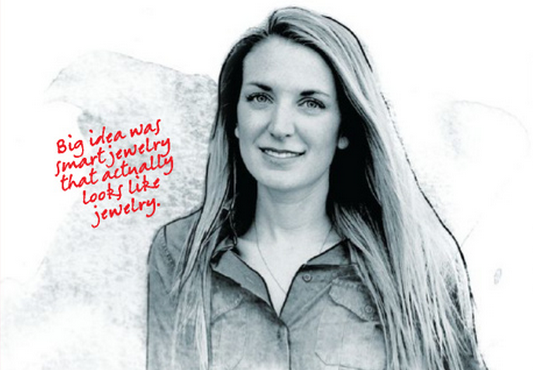
FOUNDER AND CEO, RINGLY
CHRISTINA
MERCANDO
NEW YORK, NY
If you thought jewelry couldn’t be both smart and attractive, think again.
Christina Mercando, a former eBay executive and VP of online social recommendation service Hunch, says the idea for Ringly came from simply wanting to solve a problem.

Advertisement
“I continued to miss calls and texts from my friends and family because my phone was buried in my purse,” Mercando says. “I also disliked feeling so dependent on and chained to my phone. One day I was so fed up that I thought to myself, ‘What if I could make my jewelry smart and have it remind me about certain things so I don’t have to worry so much?’ So I left my job and got to work.”
The result was the Ringly, a ring that comes in five varieties of gemstones and metal plating (four in 18K gold and one in rhodium) and vibrates and lights up to notify the wearer of phone calls, texts or important events. When it’s not vibrating or blinking, it looks like a normal ring. “Wearable devices are streaming into the market with loud, tech-focused design,” Mercando says. “I wanted to build technology that was exceptionally stylish and so discreet only I would know it existed.”
Mercando says the key to making smart jewelry successful as a category is for other manufacturers to think aesthetically, rather than only functionally. “Our biggest challenge was getting the tech as small as possible. Our goal was to make something you’d want to wear even if the technology was not there.”
Next up for Ringly? More varieties of jewelry, such as bracelets. “Stay tuned for collaborations as well,” Mercando says.
JEWELRY DESIGNER
RONY TENNENBAUM
NEW YORK, NY
While the United States edges toward equal marriage rights across the country for same-sex couples, designer Rony Tennenbaum has been leading the charge for years, not only through his words, but through an entire line of jewelry geared to the LGBT market.

Tennenbaum has considered himself married to his partner for 21 years, and he’s worked in the jewelry industry for more than 25, having done everything from manufacturing and sourcing to marketing and sales. In 2008, he decided he wanted to turn his talent in the direction of his community, and he launched his own line of engagement and wedding rings. “Back then, only a few states even allowed same-sex marriage, but I envisioned a country moving in that direction,” Tennenbaum says.
At the time, Tennenbaum says that if a person were to Google the words “gay” and “jewelry,” he would see jewelry featuring rainbow and triangle motifs, and that’s about it. “I wouldn’t wear that and my friends wouldn’t wear that,” he says. As a result, he developed his LVOE Collection, based on the premise that love is love no matter how you spell it — and that love is love no matter who the two people are. Since then, he’s added more than a dozen other collections. “A lot of rules are out the window in terms of ‘this is what a woman would want, this is what a man will want,’” Tennenbaum says. “The LGBT community wants pieces that are new and trendy. That’s where my designs are different.”
Despite some (expected) industry opposition initially, retailers across the country have begun to embrace Tennenbaum’s collection, including well-known businesses like multi-store Ben Bridge and Tapper’s in Detroit. “I think it’s phenomenal that these retailers are opening the doors to an inclusive environment,” Tennenbaum says. “It’s not that they were excluding lesbian and gay couples before, but now they’re embracing that these couples are out there and are going to get married. They are putting their foot down and saying, ‘We are here in support and we want to be part of these relationships.’”
In addition to making his jewelry line available, Tennenbaum is making himself available as a speaker to the LGBT community. Whenever a retailer takes on his line, Tennenbaum goes into the local LGBT community and speaks about “The New Etiquette of the Rainbow,” which explores questions of engagement and wedding etiquette among same-sex couples, as well as “Buying Diamonds in the Age of Equality,” which advises couples on how to make sure both people in a marriage can have the ring they want.
“There are so many things that are brand new to this niche,” he says. “A whole segment of the population is trying to figure out what to do. It’s the first time jewelry has come with an education.”
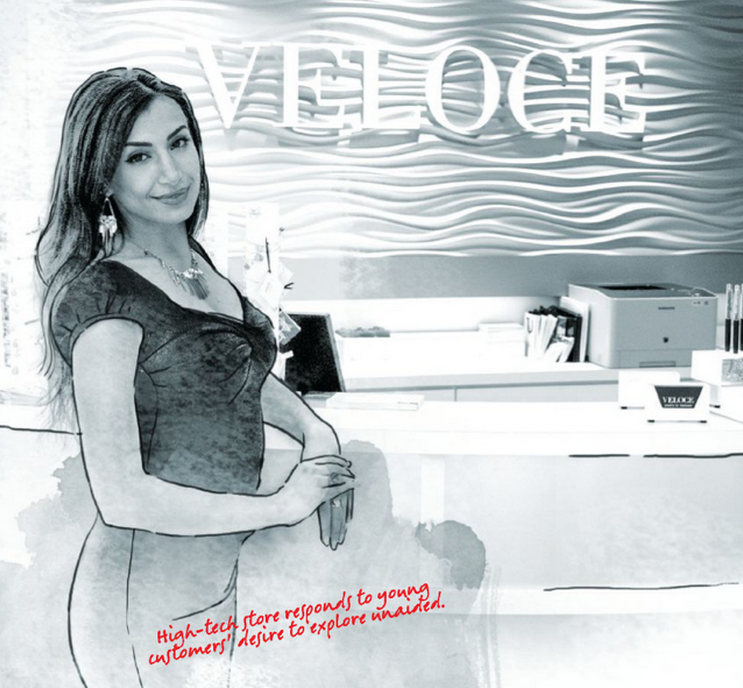
FOUNDER, VELOCE
CHRISTINA
MEDAWAR
PORTAGE, MI
Innovation doesn’t have to come from outside the jewelry industry. It can also come from a younger generation looking to make its mark.
Christina Medawar grew up in Medawar Jewelers — the Lansing, MI, store that her father, Pierre, founded in 1978. But she always knew she wanted to do something different — something more fashion-oriented. Two years ago, she brought it up to her father, and they began to brainstorm. Says Medawar: “When I shop, I like to look around and try things on. I don’t want to be bothered unless I have a question. I really liked Pandora’s concept. They have a showcase that’s open and the rings are on strings, and you can pick them up and put them on your finger. So my dad said, ‘Let’s take it one step further. When you pick up the jewelry, there will be a screen to tell you about the brand, what sizes it comes in, and what it’s made of.’ I did the research and nobody had it. So we made the software and patented it.”
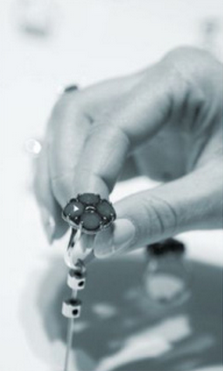
But Medawar didn’t stop there. She took one of the world’s most successful retail environments — The Apple Store — and translated it to jewelry. Veloce features white surfaces, glass walls and ring displays, and lots of space for shoppers to move comfortably. “I named the store ‘Veloce,’ which is Italian for ‘velocity,’ because the store is high-tech, high-fashion and futuristic. Customers say they feel like they’re in New York or Los Angeles instead of Kalamazoo, MI,” she laughs.
The store has been incredibly popular, with holiday sales 50 percent above last year’s. But innovation doesn’t come without growing pains, she warns. Point-of-sale software doesn’t interface with the patented Veloce software, so Medawar and her team have to enter each piece of jewelry three times: Once in the POS system, once in the patented software, and once as a photo for the viewing screen. “We’d love to find an easier way to do it, but at this point in time, there isn’t one,” she says.
That said, Medawar knows the results are worth the effort, and that innovation isn’t optional for success. “Times change, people change, things evolve. You have to be the best if you want to succeed, not only as a business owner, but also to thrill your clients. It makes me happy when people come in and say thanks for opening this store!”
JEWELRY DESIGNER
ANTHONY LENT
PHILADELPHIA, PA
At just more than 1 year old, Anthony Lent (the company) completed the most successful U.S.-based Kickstarter jewelry project ever last summer. The campaign raised $56,580 to fund a sterling silver collection. But although the company itself is new, the designer, who goes by Tony, is not — he’s been designing for four decades, often utilizing vintage techniques in innovative ways.
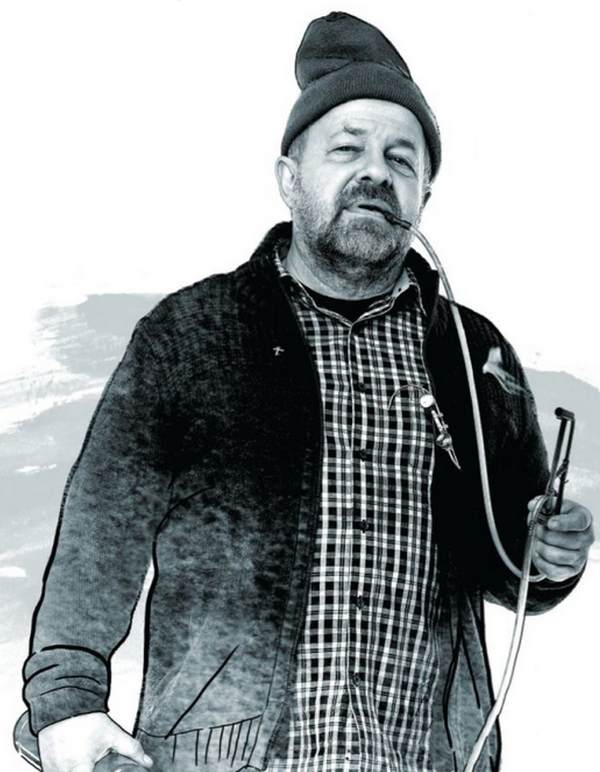
Educated as a goldsmith in Germany, Lent designed one-of-a-kind jewelry for prestigious jewelry houses in New York for years, all while teaching at the Fashion Institute of Technology and chairing the jewelry department there for over a decade. He probably would have finished his career that way except that his sons, David and Max, had other plans. They coaxed him into joining with them to start a jewelry line based on the designs he’d created over 40 years — designs that they could help make more accessible and streamlined.
“My sons have grounded me by saying ‘That’s not practical’ or ‘We have a need for something in a certain category.’ They’ve disciplined and focused me. In turn, I’ve given them the sense of history,” Lent says.
He adds that when his sons launched the Kickstarter campaign, his own generation didn’t understand. “They asked, ‘Why don’t you just borrow money?’” Lent recalls. “I explained to them that it’s not just about the money, it’s about seeing if there is an audience. It’s a product test. People get something for what they pledge.”
One look at Lent’s jewelry tells you that innovation runs in the family. His already-recognizable “moon faces” and other shapes are created by die-striking, a process not often utilized since centrifugal casting began to be widely used. He also uses a 3-D panograph to reduce the scale of his sculptures to the dies. And, he uses a blowpipe for soldering, as opposed to a typical jeweler’s torch. “Your reaction time is much longer with your hand than your breath, so it gives you more finite control,” Lent says. “It’s also a better reducing flame than many torches because it doesn’t have added oxygen.”
Between his penchant for unusual jewelry-making techniques and the digital and business savvy of his sons, Lent has all the ingredients for a successful business. There’s only one drawback, Lent says jokingly: “I can’t fire them when I get mad at them.”
CREATIVE DIRECTOR, SHINOLA
DANIEL CAUDILL
DETROIT, MI
When your brand is considered the antithesis of excrement, you know you’re doing something right. (And if you don’t understand what we’re talking about, you may not know it from Shinola.)

“The name ‘Shinola’ makes you smile,” says Daniel Caudill, the man charged with overseeing design in all of the company’s various product categories (including watches, bicycles, leather and more). “It doesn’t take itself too seriously, but it’s also the idea of doing business a certain way. When Shinola was in its heyday in the ’20s, ’30s and ’40s, you treated people with integrity.”
That message of integrity is a big part of why Shinola has been successful in producing and selling Swiss-quality watches made in Detroit. The company earned $80 million in gross sales in its first 18 months of production. A big part of that is the marketing of the brand, which taps a zeitgeist of support for American-made goods — especially those made in struggling Detroit, a former gem of American manufacturing — as well as machines and goods that will last. But for this strategy to work, you have to actually make things that last, Caudill says.
“Watches are very difficult. You either do it right, or you don’t do it,” Caudill says. “It’s such an intensive and precise manufacturing process. Design, product, quality — if we can do that, it’s proof we can do anything in this country. The level of quality, the level of detail, the dedication of the work force, the positivity of the entire team — you wouldn’t expect it, necessarily. And you can’t put it down on paper.”
The culture at Shinola is such that there are no individual heroes, only a great team. That’s what makes the company so innovative, according to Caudill. “No one person can influence all innovation, but through true collaboration, you can make amazing things.
“Using bikes as an example, Sky Yaeger was head designer at Bianchi for 17 years, she was a bike racer, and she’s always pushing the boundaries of production and design, but I’m always bringing her back to the brand and making sure everything ties in.
“Everyone comments on what they know — and stays out of what they don’t. It creates a great business model, great styling and an amazing product.”

OWNER, YLANG | 23
JOANNE TEICHMAN
DALLAS, TX
Last August, the Wall Street Journal named Ylang | 23 as one of five “best e-commerce destinations for fine jewelry.” But it was 14 years earlier, in 2000, that Ylang | 23 first launched its website, and the store began selling jewelry online a year later — before most jewelers even had a Web presence.
“Credit me for saying to my husband, Charles, one day: ‘I need a website,’” says co-owner Joanne Teichman. “And I drew out the six pages that I wanted and went shopping for a website developer in Dallas to bring it to life.”
The Teichmans have been early adopters of many different business practices and technologies over the years since the store opened in 1985. They were among the first to carry designer jewelry and bring designers in for trunk shows. They helped pioneer the “layer and mix” jewelry fashion of that time that later morphed into stacking in the 2000s. And Joanne Teichman got started early in social media, participating in Facebook, Twitter, Instagram, Pinterest and more obscure services.
But for Teichman, it’s not about being first to market, but about being right in what you bring to market. “Whatever we do, we want to be sure that the experience is delivered in a wonderful way. If the experience falls flat, you’ve really hurt yourself,” she says.
That’s the reason why Ylang | 23 began shipping worldwide at no extra cost to customers. “People were visiting us from outside the country, and then they’d go home and want something,” Teichman says. The store originally partnered with a company called International Checkout, which allowed Ylang | 23 to ship to a domestic address, from which International Checkout would ship internationally. Today, it works with Borderfree, which allows online shoppers to see an item’s price in their own currency.
Although there have also been tech misses over time, Teichman says it’s all worth it as long as her clients benefit. “We want to be sure that anything we do delivers the exceptional customer service that’s the core of our business.”

PRESIDENT, RITANI
BRIAN WATKINS
SEATTLE, WA
Why has a former Blue Nile executive allied himself with independent brick-and-mortar retailers? It’s all about the customer, says Brian Watkins, now president of bridal ring maker Ritani (after a brief stint as head of strategy for Nordstrom). “We surveyed consumers and found that 90 percent start out shopping online but less than 10 percent buy. It might have been a trust issue, or they’re scared of doing a return, or they wanted to touch and see the ring. So there’s a consumer out there who wanted to have this online and offline experience but was unable to.”
As a result, Watkins and the Ritani team rolled out a “clicks-and-bricks” website in 2011 that allows consumers to build a custom ring and see it in person at a local retailer with no down payment required. It also features a virtual gemologist function that has the capability of showing the customer high-definition videos of multiple diamonds.
But at a company that’s constantly innovating, that’s already old news. Last year, Ritani unveiled an iPad app for retailers that acts as a sales tool by working in conjunction with RFID chips in the jewelry tags. When the RFID-tagged jewelry passes over a scanner as it’s removed from a showcase, an image of the ring appears on a nearby iPad, allowing consumers to see style, metal and gemstone options. The app also provides analytics to the store owner in regard to the styles shown and the success rate of each salesperson.
And this is just the beginning, Watkins says. “We’ve seen technology here that I am so excited about, and we can’t execute it yet because it’s either too complex or it won’t translate properly into the retail environment. But we have all these starts of things that are ready to go when the technology or retail environment changes.”
It’s a foundation for innovation, which Watkins says is critical for business survival. “It might sound corny to say, but innovate or die … it’s got to be in the DNA of a business.”
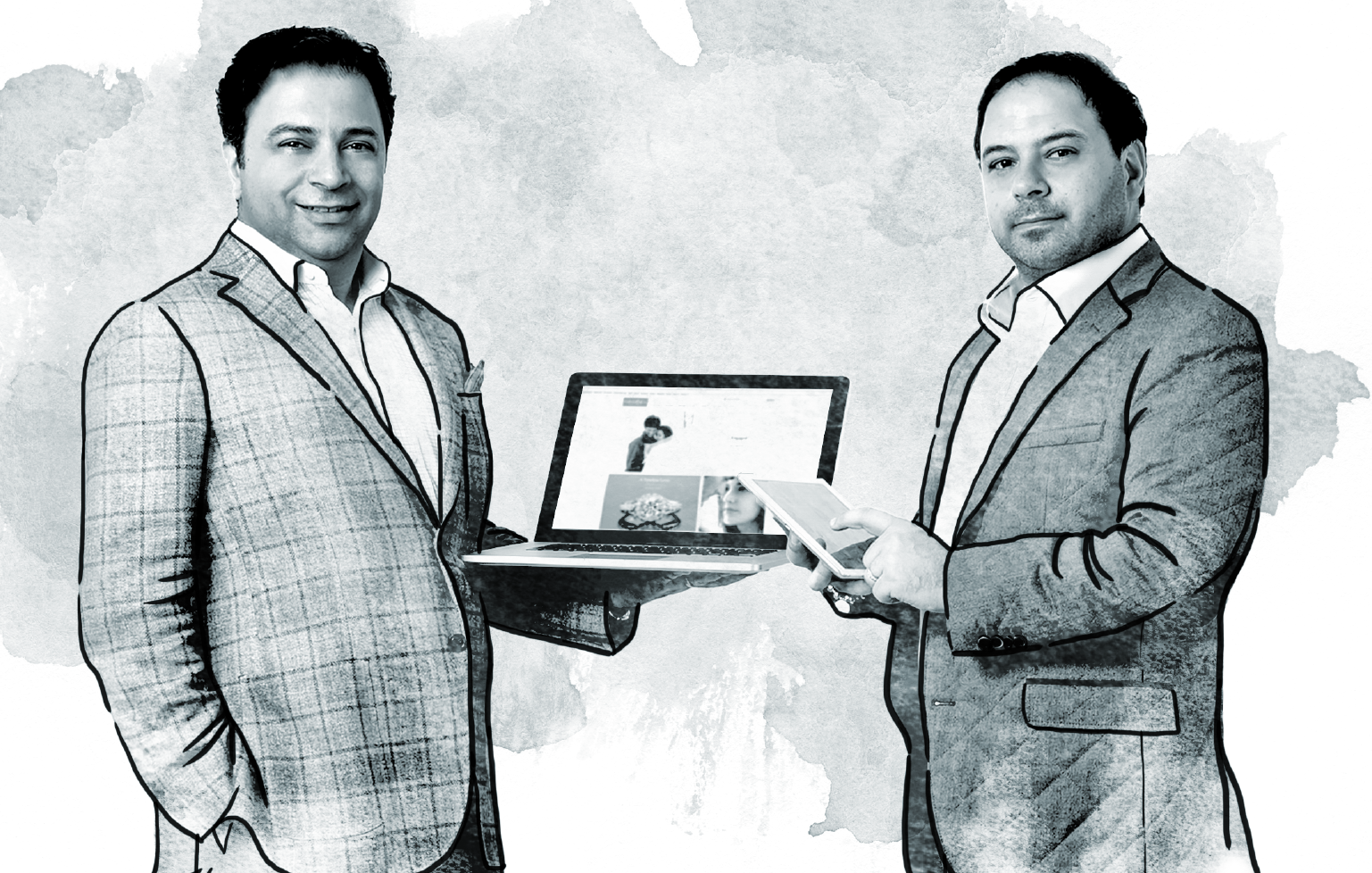
CEO & SENIOR VICE PRESIDENT, GABRIEL & CO.
JACK & DOMINICK
GABRIEL
NEW YORK, NY
For brothers Jack and Dominick Gabriel innovation is not an end unto itself — it’s a means to helping their clients to be successful.
Growing up, the Gabriels learned the jewelry business from their father, master jeweler Elias Gabriel. They launched the manufacturing house Gabriel & Co. in 1989. Since then, they’ve been on the cutting edge of technology in the industry, whether it was the jewelry itself or the way that it is inventoried and sold.
One such innovation was a better screwback earring, a mechanism that the company invented and patented as a result of a customer losing an earring. Later, in 2005, the Gabriels responded to the “blood diamond” furor by putting serial numbers on each piece of jewelry the company produced.
The concept perhaps appreciated most by their retailers is the alloy-and-CZ-based sample line that Gabriel & Co. introduced in 2008. The initiative originated in a conversation between Dominick, Jack and their sales manager about retailers having a difficult time investing large amounts of money into engagement ring lines. To help retailers save money, the brothers came up with a plan to lease the sample rings to retailers over time. On top of that, since gold prices were rising, they developed an alloy. “We emphasized that the rings have to be finished with the same quality as our diamond jewelry. Every piece is hand-set. We don’t cut corners,” Dominick says. In 2009, the recession hit and the program took off. Instead of showing 20 rings, Gabriel’s retailers could show 200.
But that, as Jack says, was the easy part. It’s delivery that’s difficult. “When you take an order from a jeweler, they can’t wait four to six weeks. We changed the whole process in our factory to deliver an item within seven to 10 days, even special orders,” Jack says. It was a huge undertaking, but ultimately, it made the company’s sample program more successful than others.
More recently, Gabriel & Co. has launched an “eShopinShop” concept that integrates into their retailers’ websites seamlessly, updating product, 360-degree pictures and pricing in real time.
“Innovation is not something we plan,” Jack says. “We try to do the right thing for the client and things happen. If you have the right intentions, things happen.”
OWNER, GREEN LAKE JEWELRY WORKS
JIM TUTTLE
SEATTLE, WA
Cut out the middle man between customers and the jeweler? To Jim Tuttle, this idea wasn’t revolutionary — it just seemed logical.
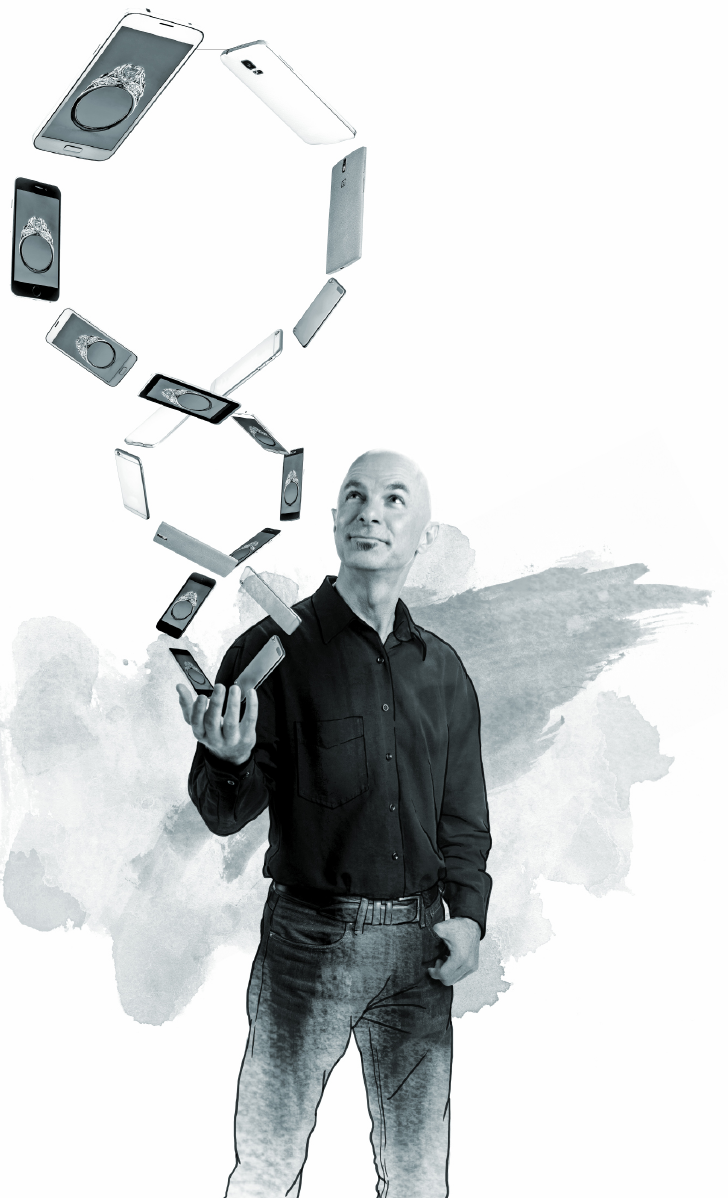
As a bench jeweler in the 1980s working for an Atlanta store, he found himself being paid to remake jewelry over and over because the salespeople cared only about closing the sale, not getting the necessary details to make the client happy the first time. “One day, I built a ring and the client hated it and wanted to return everything,” Tuttle says. “So the salesperson asked me to meet the client and make something pretty, and I did. I thought, ‘This is crazy — I need to have a shop where I meet with the client myself.’”
Tuttle moved to Seattle and opened Green Lake Jewelry Works, a 500 square-foot shop with no salespeople. Within three months, he was buried with work and had to hire more jewelers. Today, the current 7,500 square-foot space is just about maxed out, and Tuttle is looking to add locations.
“Our goal is to grow brick-and-mortar, as many as possible,” he says. “We need systems that will scale. In any given market out there, we think our shop would do very well.” The expansion will begin in early 2016 when Green Lake opens a second location in Bellevue, WA.
Not only is the bricks-and-mortar model innovative, but the Green Lake online experience is revolutionary as well, allowing clients to create a “Design Page” and work with a custom jeweler remotely. Tuttle says 90 percent of the store’s online clients live outside the Seattle area. “There’s a skew towards more unique and bigger rings from our online clients,” he says. “I think it’s because if they wanted something more straightforward, they’d have found it locally. They trip over our Pinterest page and say, ‘Wow, this is different from everything else.’”
Tuttle says that being innovative in jewelry retail requires reading outside the industry. “I read tech blogs pretty much every day, and other completely unrelated things about research, medical science, non-jewelry topics — they give me ideas and thoughts. Even if we’re looking for how to adjust our return policy, we’ll look outside to see what’s cutting edge.”